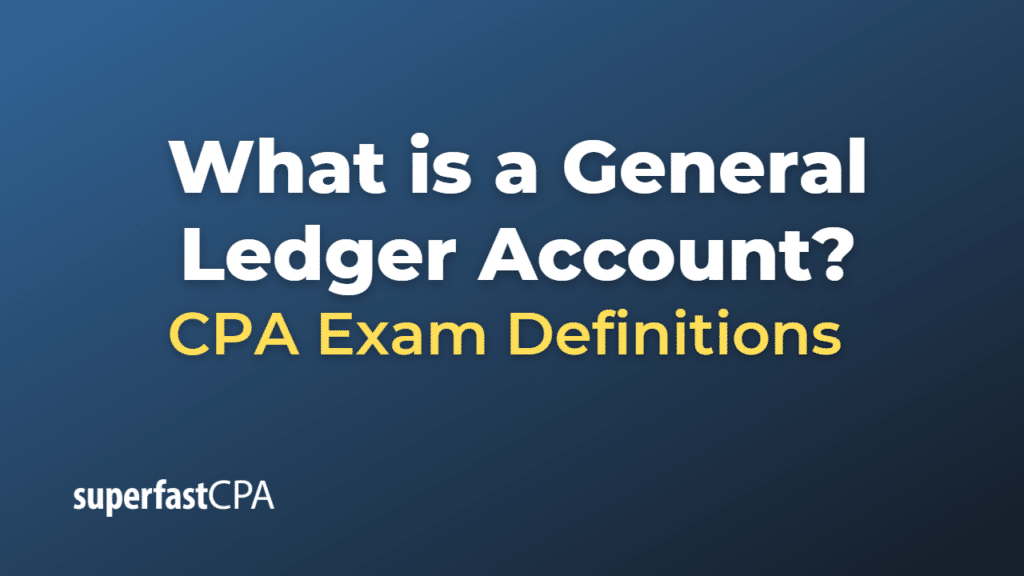General Ledger Account
A general ledger account is a record in which a company maintains documentation of a specific type of transaction for a certain period. Each account corresponds to any reportable segment where money can be spent or earned, which affects the balance of income or expenses, assets or liabilities, or owner’s equity.
In other words, a general ledger account is an individual account for each type of asset, liability, equity, revenue, and expense. For example, a company might have a general ledger account for “Cash,” another for “Accounts Receivable,” another for “Office Supplies,” and so on.
Each account in the general ledger consists of the following:
- Account Title: The name of the general ledger account.
- Account Number: A unique number to easily identify and locate the account.
- Beginning Balance: The balance in the account at the beginning of the accounting period.
- Debits and Credits: These are the increases and decreases in the account for each transaction during the period.
- Ending Balance: This is the balance that remains in the account at the end of the accounting period after accounting for all debits and credits.
These individual ledger accounts provide the detailed information that is used to prepare the company’s financial statements – balance sheet, income statement, and statement of cash flows. For example, all the transactions in the “Cash” account are added up to find the company’s total cash on hand to report on the balance sheet.
In modern computerized accounting systems, the general ledger works in combination with sub-ledgers (also known as subsidiary ledgers), where transaction details are recorded. The summarized totals from these sub-ledgers are then periodically transferred to the general ledger accounts.
Example of a General Ledger Account
Let’s create an example using a simple “Cash” general ledger account.
Imagine a company, let’s call it Sunshine Bakery. Here’s how the “Cash” general ledger account for Sunshine Bakery might look for the month of June:
- Account Title: Cash
- Account Number: 101
- Beginning Balance (June 1): $10,000
Then, throughout the month of June, Sunshine Bakery has the following transactions:
- June 3: Sunshine Bakery makes sales and receives cash of $5,000.
- Debit: Cash $5,000
- Credit: Sales $5,000
- June 10: Sunshine Bakery pays rent of $2,000.
- Debit: Rent Expense $2,000
- Credit: Cash $2,000
- June 15: Sunshine Bakery pays salaries of $1,500 to employees.
- Debit: Salary Expense $1,500
- Credit: Cash $1,500
- June 20: Sunshine Bakery purchases baking supplies for $1,000 in cash.
- Debit: Baking Supplies $1,000
- Credit: Cash $1,000
- June 30: Sunshine Bakery makes more sales and receives cash of $7,000.
- Debit: Cash $7,000
- Credit: Sales $7,000
At the end of the month, the “Cash” general ledger account would look like this:
- Ending Balance (June 30): $10,000 (beginning balance) + $5,000 (June 3rd sales) – $2,000 (June 10th rent) – $1,500 (June 15th salaries) – $1,000 (June 20th supplies) + $7,000 (June 30th sales) = $17,500.
So, at the end of June, Sunshine Bakery has a balance of $17,500 in their “Cash” general ledger account. Each general ledger account would be managed in a similar manner, recording all the increases and decreases that happen due to various transactions throughout the month.













